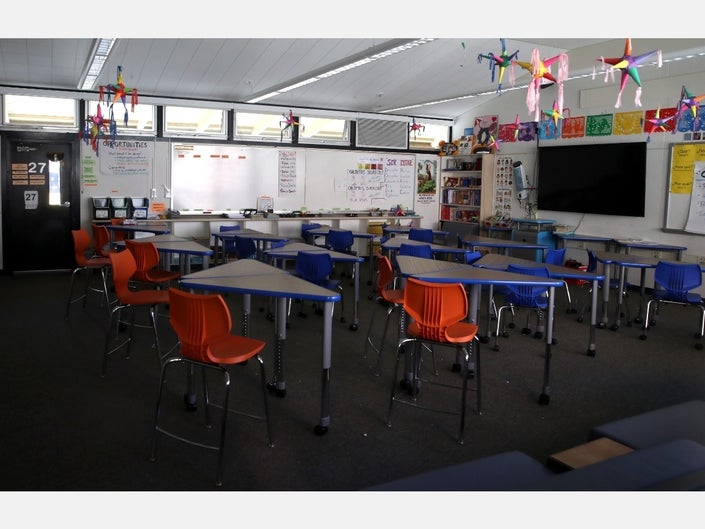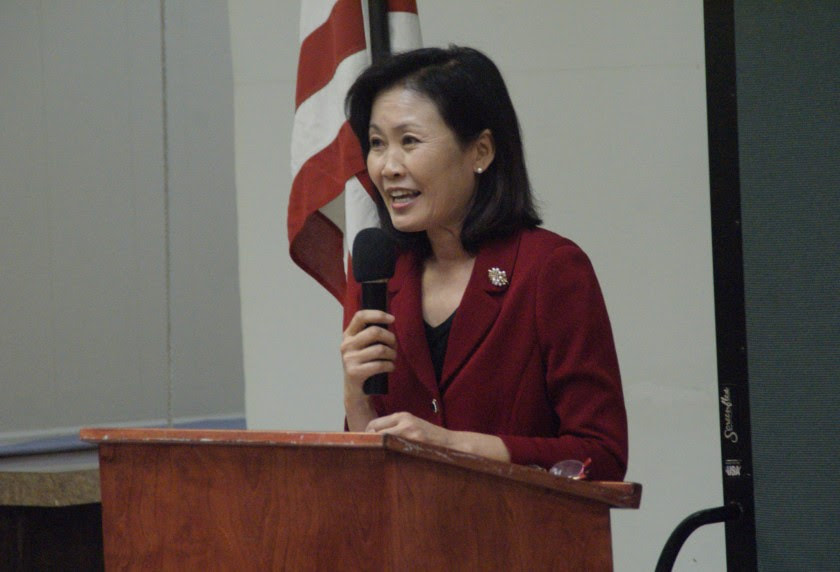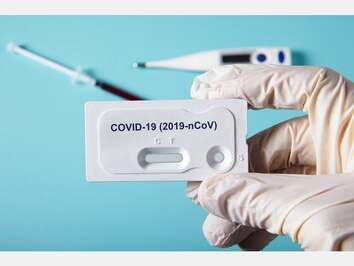Public schools may reopen as early as July, along with some businesses, according to a coronavirus reopening plan unveiled Tuesday.
By Nick Garber, Patch Staff
Apr 28, 2020 1:07 pm PT | Updated Apr 28, 2020 1:39 pm PT
By Nick Garber, Patch Staff
Apr 28, 2020 1:07 pm PT | Updated Apr 28, 2020 1:39 pm PT
CALIFORNIA — State officials on Tuesday unveiled a plan to gradually restart public life in California amid the coronavirus crisis, with public schools reopening for the next school year as early as late July and businesses reopening in stages, depending on their level of risk.
The four-stage process for easing the state's stay-home order was unveiled at a news conference by Gov. Gavin Newsom and Dr. Sonia Angell, the state's Public Health Officer. Newsom did not provide a timeline for when restrictions would be eased, but said the state was "weeks, not months, away from making meaningful modifications" to the order, assuming social distancing continues.
According to the state's reopening framework, California is currently in Stage 1: defined by creating a safe environment for essential workers and laying out plans for easing restrictions in the future.
Smart Asset | Featured Advertiser
7 Mistakes You’ll Make When Hiring a Financial Advisor
Hiring the wrong financial advisor can wreak havoc on your investments and ruin your retirement. However, this new tool is changing everything.
Learn More The highly anticipated Stage 2 may include reopening schools in late July or August, Newsom said, citing the need to make up for lost learning as the state's students have faced a rough transition to distance education. Lower-risk businesses would also be allowed to reopen during this stage, including manufacturing, retail that allows for curbside pickup and offices that are able to implement social distancing, Angell said.
"Our kids have lost a lot with this disruption," Newsom said, calling distance learning "inadequate" to meet the needs of the state's six million students.
The state will enter this phase through a statewide modification to its stay-home order, Angell said. For that to happen, the state must reach sufficient testing and contact tracing capacity, hospitalization and ICU trends must stabilize and there must be enough PPE to meet demand.
Next, Stage 3 would allow the reopening of "higher risk" workplaces that require person-to-person contact. That includes personal care businesses like gyms and hair salons; churches, weddings and other religious services; and entertainment venues like theaters and sports without audiences.
Don't miss updates about the coronavirus in California as they are announced. Sign up for Patch news alerts and newsletters.
A fourth and final stage, in which the state lifts its stay-home order and allows high-risk places like concert venues, live sports and convention centers to reopen, will not come until the state has access to therapeutic drugs to treat COVID-19, Angell said. Experts have warned that that development may take months, if not years.
Avoiding a second waveTuesday's news conference was billed as an update to the fifth of California's six goals that state officials are studying as they decide when to reopen the state. The fifth goal concerns whether businesses, schools and child care facilities are able to maintain social distancing, including state guidelines that may require health checks for employees and customers.
While the state has seen progress in its efforts to slow COVID-19, officials and public health experts have warned repeatedly that reopening the state too soon could cause a disastrous resurgence in cases.
"I want to caution everybody, if we pull back too quickly … it could start a second wave that could be even more damaging than the first," Newsom said Tuesday.
The state's other indicators included whether California had the means to protect its most vulnerable residents from contracting COVID-19, how well the state's hospital systems can handle surges in patients and whether the state had developed new treatments for COVID-19.
Newsom said Tuesday that the state is now testing an average of 20,000 people per day. The state had hoped to reach 25,000 daily tests by the end of April, with an eventual goal of 80,000.
California's testing rate, which experts have called the most important benchmark for containing the coronavirus, still lags behind those of dozens of other states.
As for contact tracing — a crucial way for officials to understand how the virus is spreading — California hopes to train a team of 10,000 tracers, drawing from an existing pool of state workers. Newsom has not said when they will be ready to deploy.
Full coronavirus coverage: Coronavirus In California: What To Know
The four-stage process for easing the state's stay-home order was unveiled at a news conference by Gov. Gavin Newsom and Dr. Sonia Angell, the state's Public Health Officer. Newsom did not provide a timeline for when restrictions would be eased, but said the state was "weeks, not months, away from making meaningful modifications" to the order, assuming social distancing continues.
According to the state's reopening framework, California is currently in Stage 1: defined by creating a safe environment for essential workers and laying out plans for easing restrictions in the future.
Smart Asset | Featured Advertiser
7 Mistakes You’ll Make When Hiring a Financial Advisor
Hiring the wrong financial advisor can wreak havoc on your investments and ruin your retirement. However, this new tool is changing everything.
Learn More The highly anticipated Stage 2 may include reopening schools in late July or August, Newsom said, citing the need to make up for lost learning as the state's students have faced a rough transition to distance education. Lower-risk businesses would also be allowed to reopen during this stage, including manufacturing, retail that allows for curbside pickup and offices that are able to implement social distancing, Angell said.
"Our kids have lost a lot with this disruption," Newsom said, calling distance learning "inadequate" to meet the needs of the state's six million students.
The state will enter this phase through a statewide modification to its stay-home order, Angell said. For that to happen, the state must reach sufficient testing and contact tracing capacity, hospitalization and ICU trends must stabilize and there must be enough PPE to meet demand.
Next, Stage 3 would allow the reopening of "higher risk" workplaces that require person-to-person contact. That includes personal care businesses like gyms and hair salons; churches, weddings and other religious services; and entertainment venues like theaters and sports without audiences.
Don't miss updates about the coronavirus in California as they are announced. Sign up for Patch news alerts and newsletters.
A fourth and final stage, in which the state lifts its stay-home order and allows high-risk places like concert venues, live sports and convention centers to reopen, will not come until the state has access to therapeutic drugs to treat COVID-19, Angell said. Experts have warned that that development may take months, if not years.
Avoiding a second waveTuesday's news conference was billed as an update to the fifth of California's six goals that state officials are studying as they decide when to reopen the state. The fifth goal concerns whether businesses, schools and child care facilities are able to maintain social distancing, including state guidelines that may require health checks for employees and customers.
While the state has seen progress in its efforts to slow COVID-19, officials and public health experts have warned repeatedly that reopening the state too soon could cause a disastrous resurgence in cases.
"I want to caution everybody, if we pull back too quickly … it could start a second wave that could be even more damaging than the first," Newsom said Tuesday.
The state's other indicators included whether California had the means to protect its most vulnerable residents from contracting COVID-19, how well the state's hospital systems can handle surges in patients and whether the state had developed new treatments for COVID-19.
Newsom said Tuesday that the state is now testing an average of 20,000 people per day. The state had hoped to reach 25,000 daily tests by the end of April, with an eventual goal of 80,000.
California's testing rate, which experts have called the most important benchmark for containing the coronavirus, still lags behind those of dozens of other states.
As for contact tracing — a crucial way for officials to understand how the virus is spreading — California hopes to train a team of 10,000 tracers, drawing from an existing pool of state workers. Newsom has not said when they will be ready to deploy.
Full coronavirus coverage: Coronavirus In California: What To Know



 RSS Feed
RSS Feed
